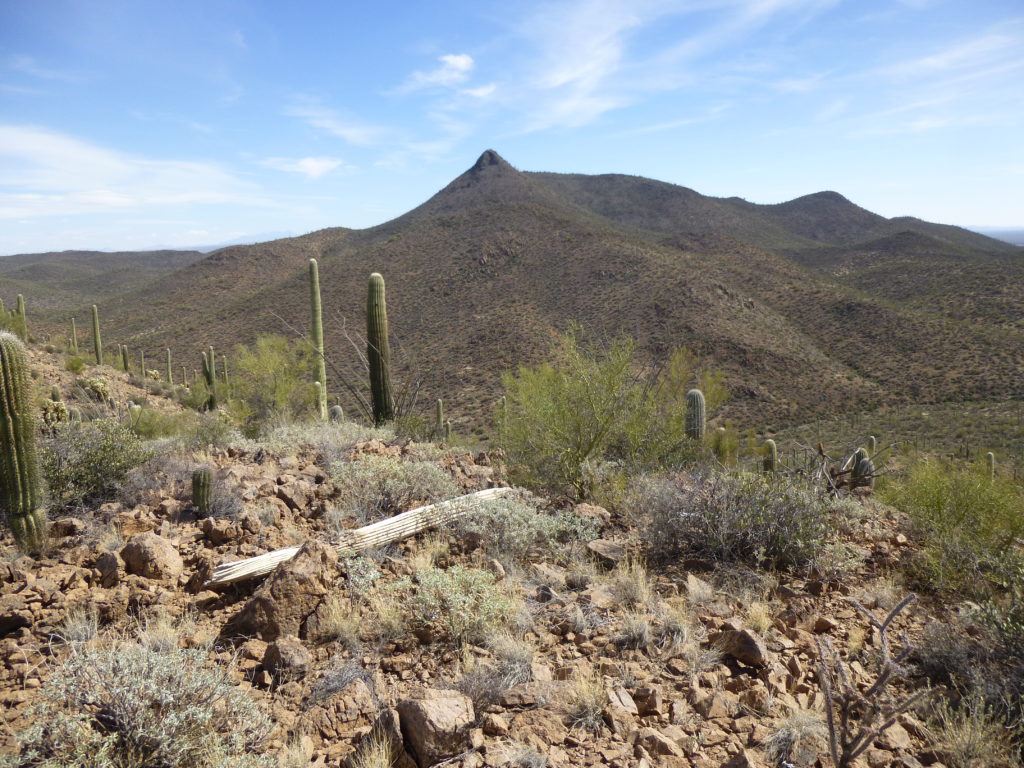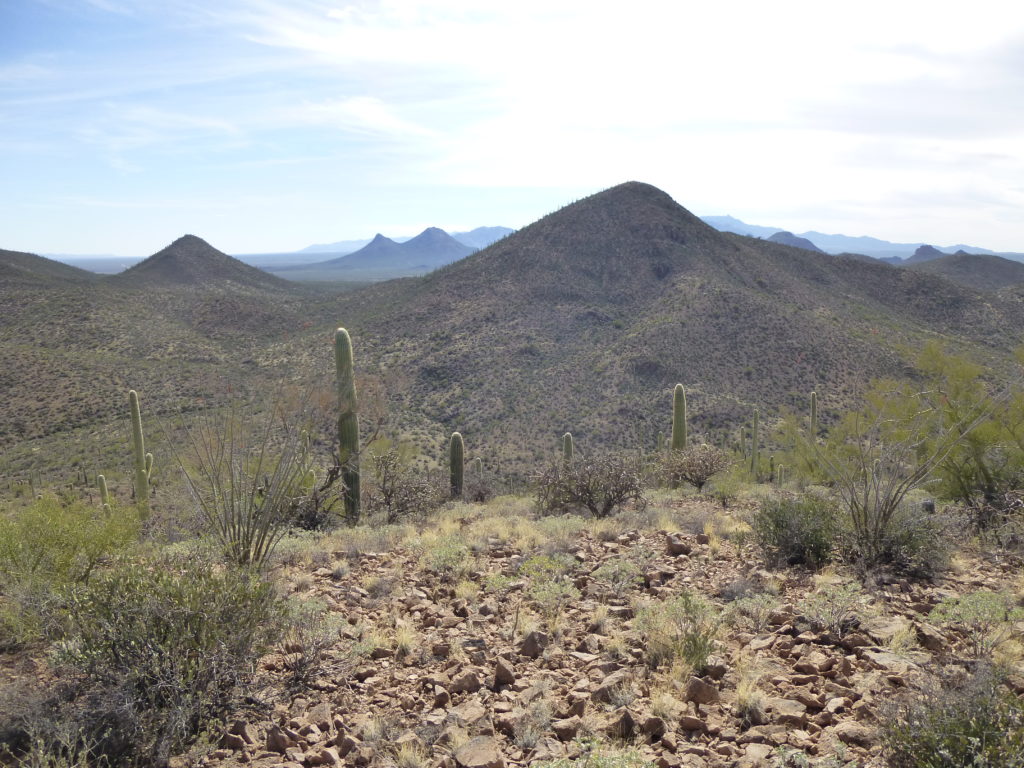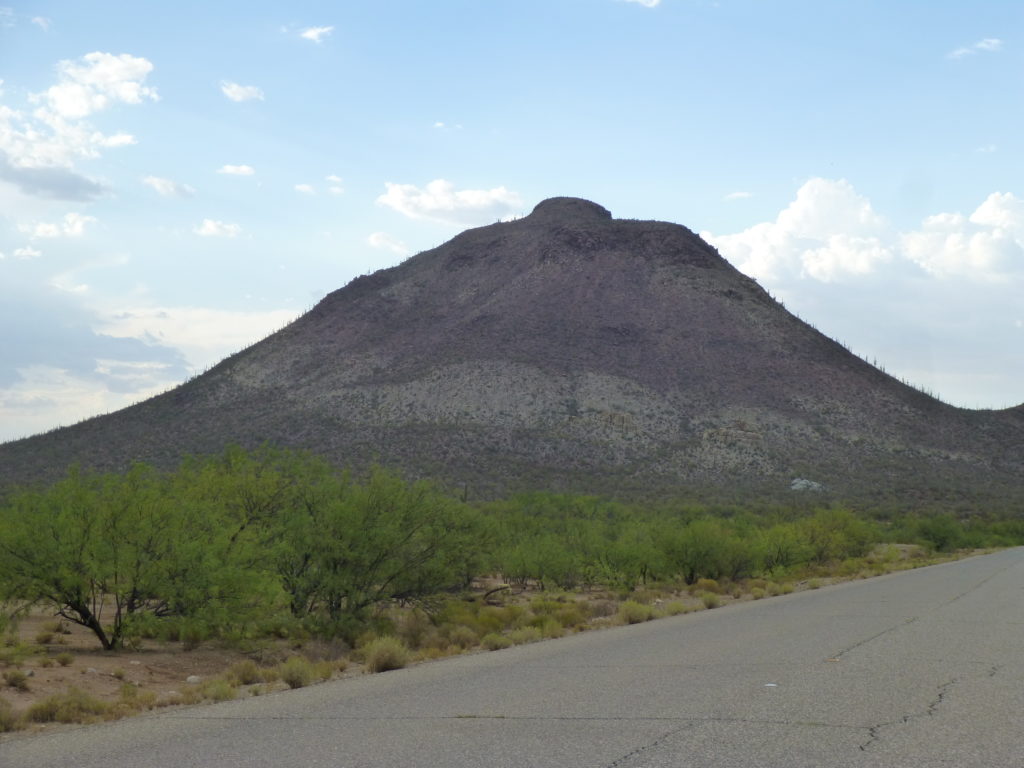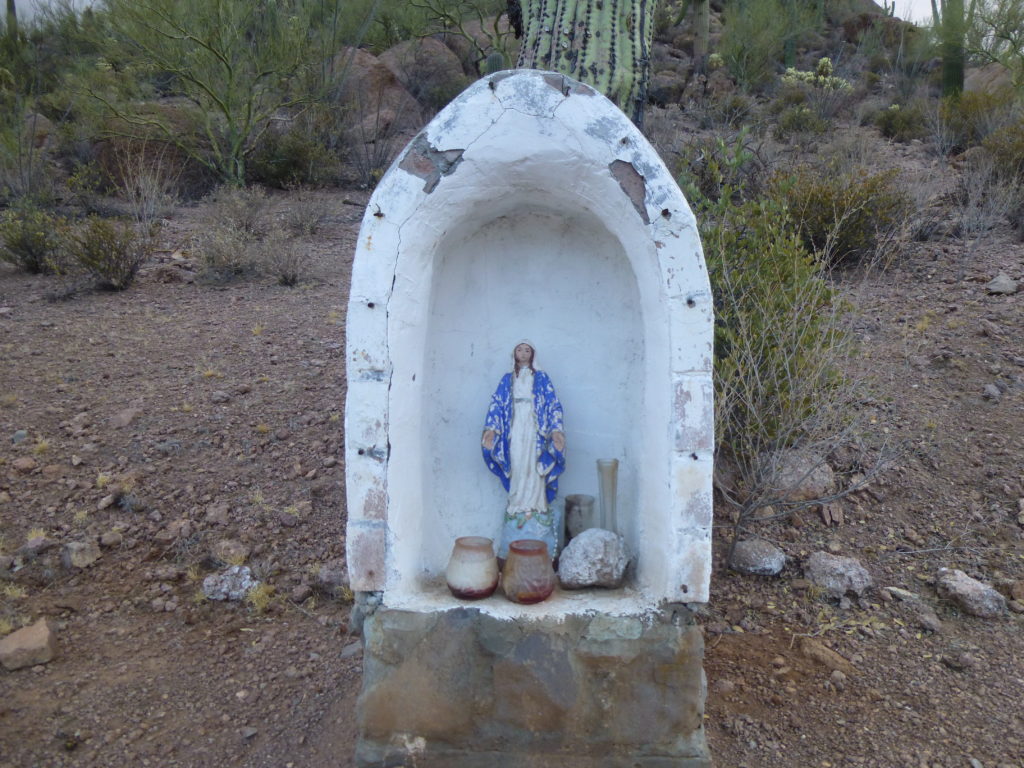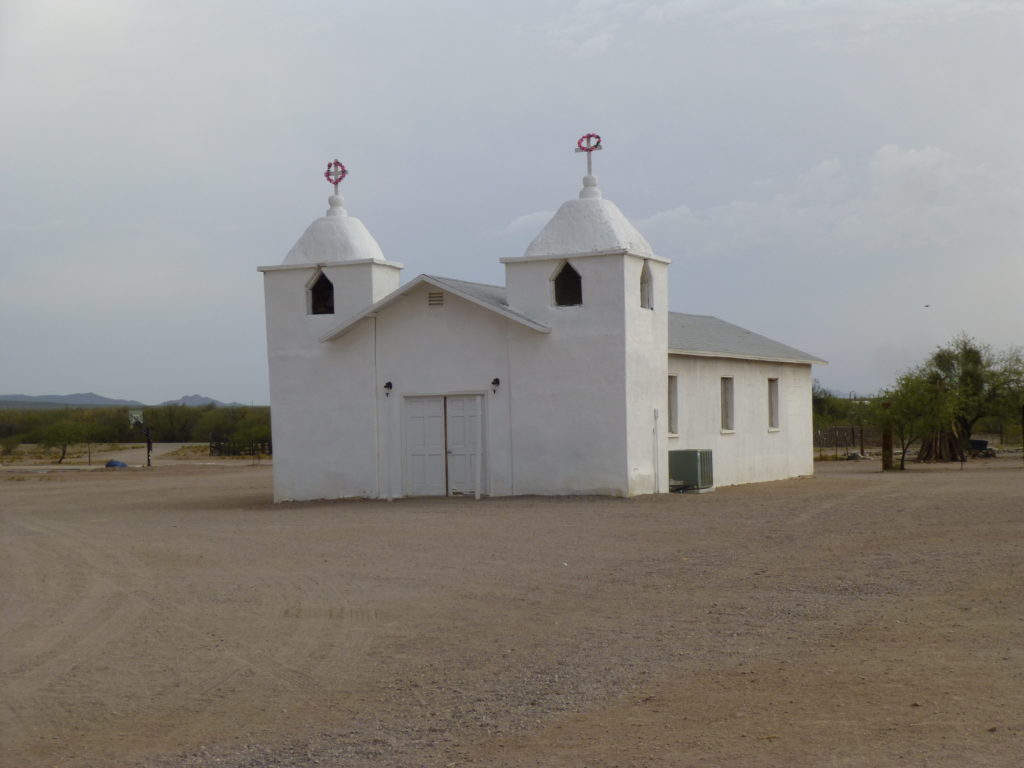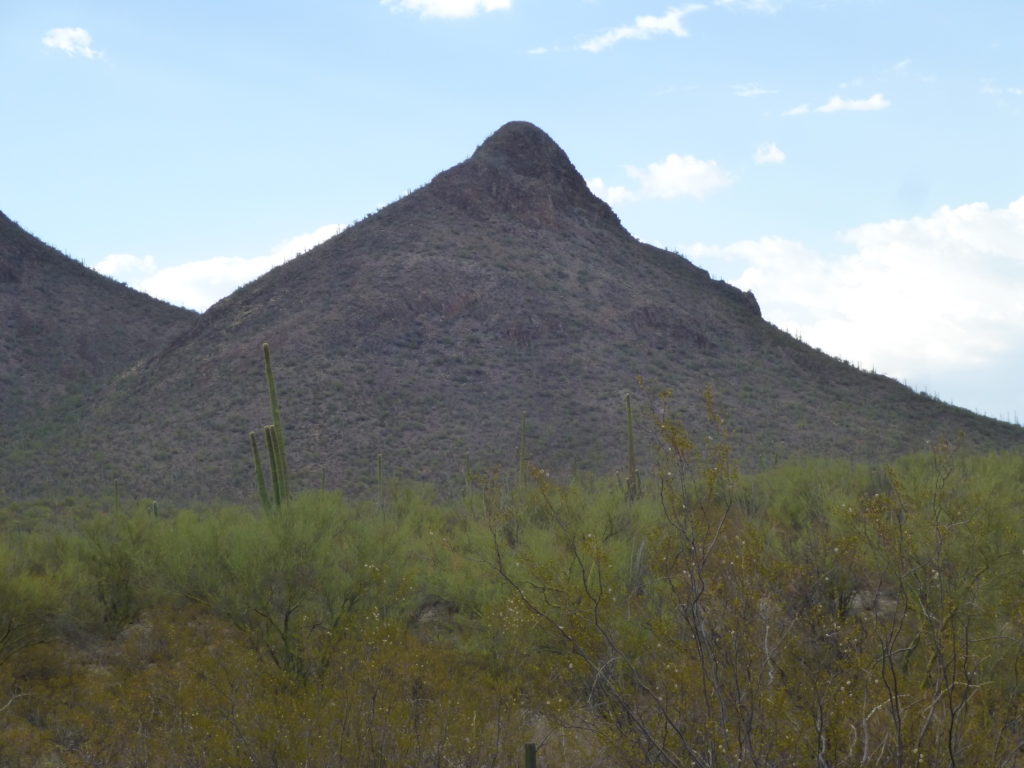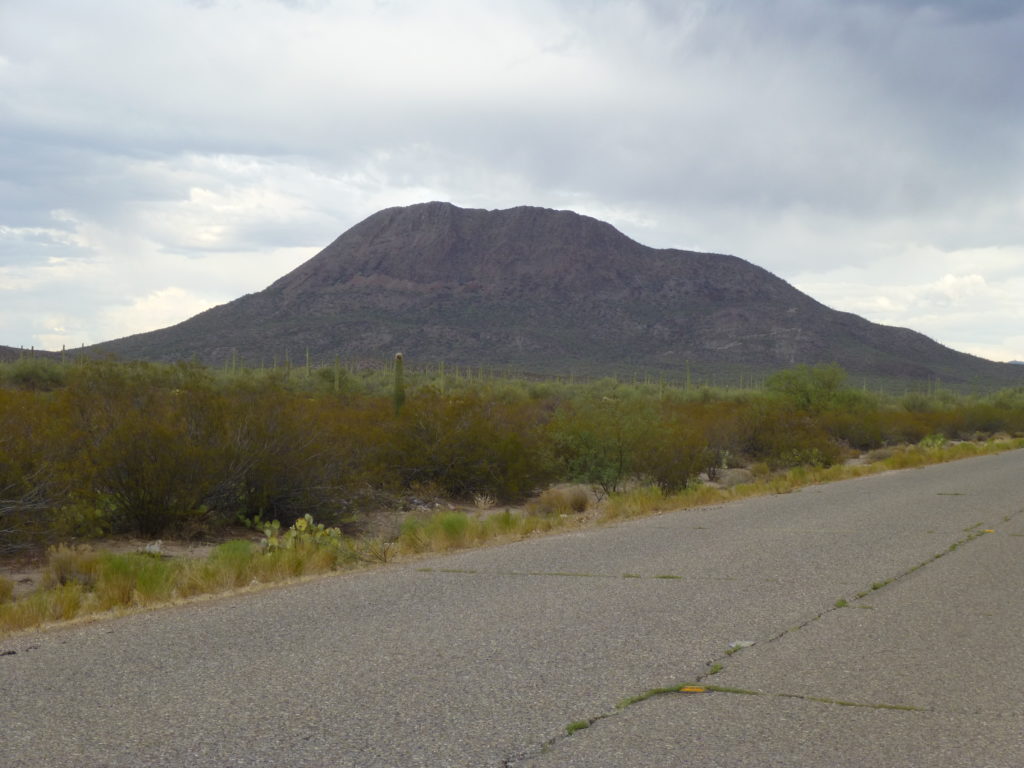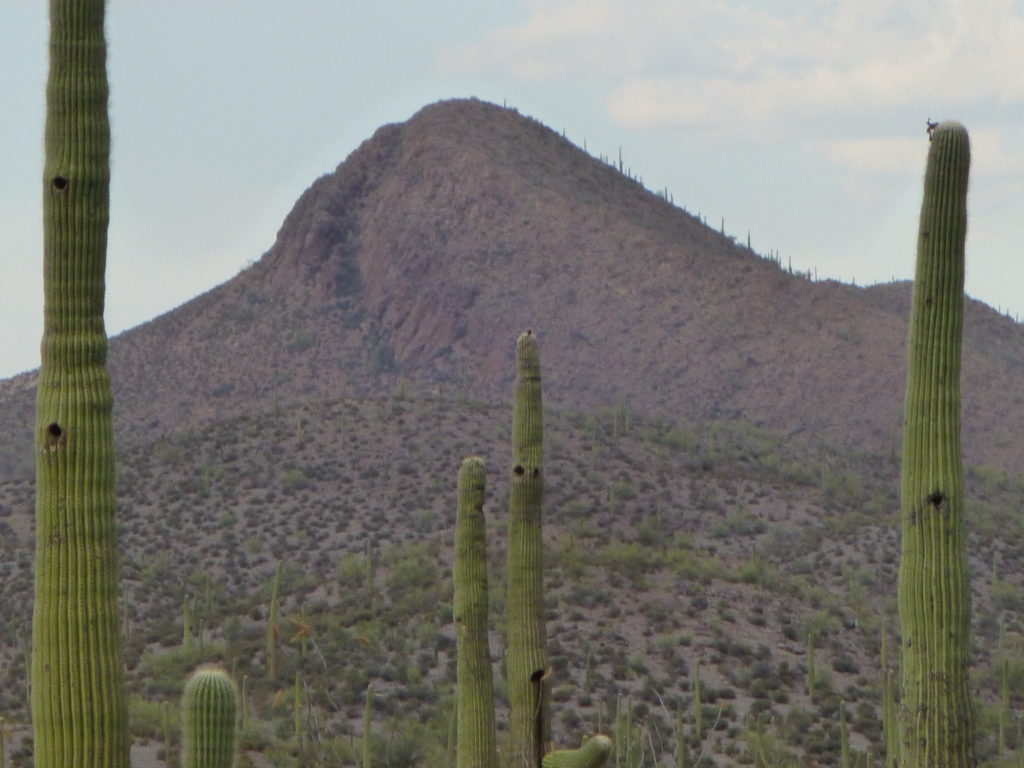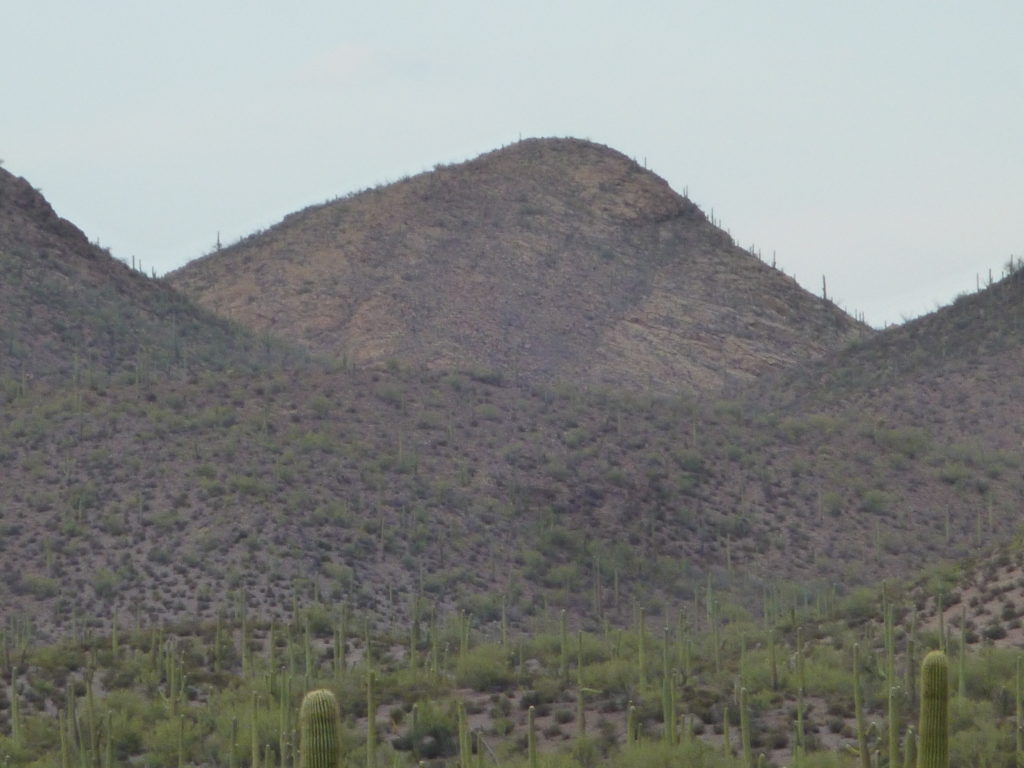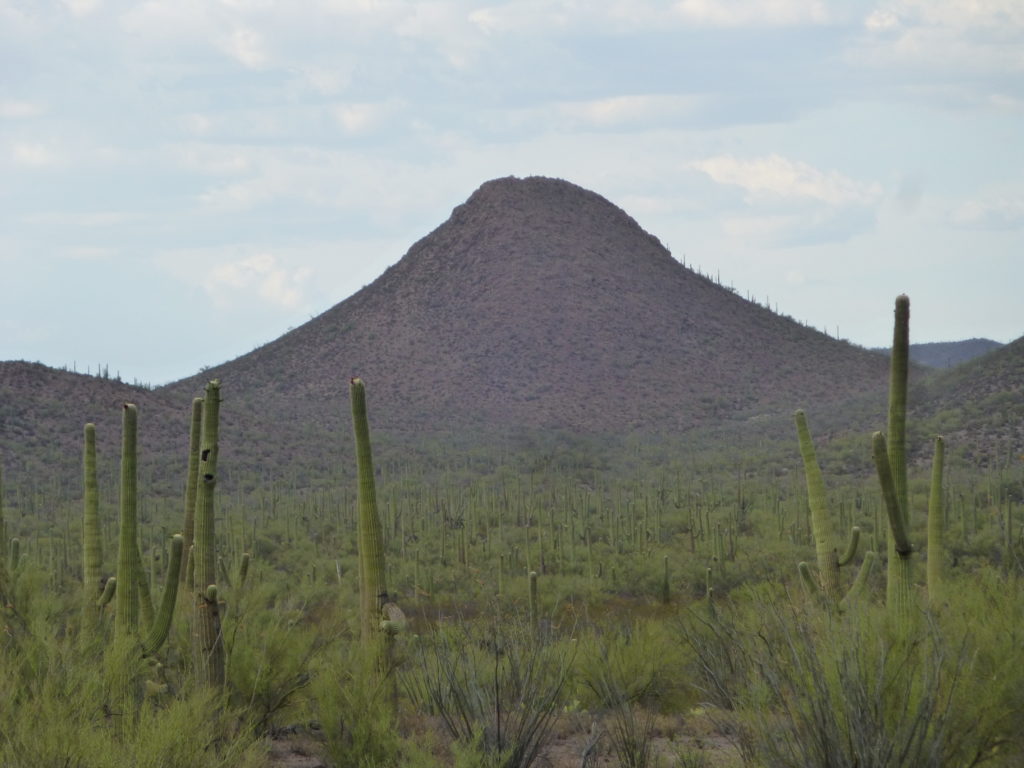Before starting this installment, please be sure to first read the 2 previous chapters called Part 1 and Part 2.
A note to my readers – before I began this project, I had made a list of all of my climbing objectives in the Roskruge Mountains. Some of them were named features lacking a full 300 feet of prominence; others were un-named points that for various reasons held some appeal to me, yet did not have that 300 feet of prominence that we peakbaggers usually seek. However, my main goal was to do a thorough exploration of the range and to have a lot of fun doing it.
Day 10 – Wednesday, January 14, 1998
I left my home pretty early in a bit of fog, driving out past Three Points to a turnoff from Highway 86, a dirt road which headed northwest and in to Martina Mountain. Almost a month had passed since my last trip to the Roskruge, and it felt good to be back. I drove out past Middle Tank, then a couple of miles farther. I found an overgrown, rocky road, very rough, which I followed east – I finally gave up and parked in a level spot. Walking farther east, I started up a ridge which I followed south and then ascended the north side of Peak 3405. There was no sign of any previous visitors. I returned to my truck a slightly different way and ate an early lunch.
It was time for something bigger. From the same parking spot, I started up the long south ridge of my next peak. This ridge meandered and proved quite interesting, steep and narrow at times – it led me right to the top of San Benchmark.
Aside from the usual trash left by the original survey party, sticks and wire, it appeared that no other climbers had visited. Leaving a register, my second of the day, I descended steeply to the west and made my way over to the base of Peak 3463. I left my pack in an open spot, then did a round-trip ascent complete with register in 28 minutes.
When I was back down at my pack, I started south – I crossed a few washes and hills, then a ridge-line, then down into a wash which I followed for some distance to finally regain the truck. This loop to climb the 2 peaks had taken about 3 hours. I drove the rough road (easily the worst road I’d driven in all of the Roskruge) back out downhill to the better Middle Tank road. As I worked my way back to the highway, I kept a sharp eye out for the road heading west to the next group of peaks I wanted to try at a later date.
Nine days later, I was back. This time, the first thing I did was to drive out almost 11 miles past Three Points, out on to the reservation, and turned north on the paved road that led to the village of San Pedro. Not a mile north of the highway, I found a spot to park. I was feeling a bit paranoid, as I was there to climb a mountain in plain view of any passers-by. My route took me northwest up the sometimes-steep and rubble-strewn slope of Bell Mountain as the sun rose.
It was chilly, near freezing. It took less than half an hour to reach the summit, where I found a large cairn but no register. From the top, I had my first-ever glimpse of the village of San Pedro, about 2 miles to the north. The Tohono O’odham Indian Reservation is comprised of 11 districts – 2 of them are separate from the main group of the other 9; one is near Tucson, the other, near Gila Bend. Of the 9, it turns out that San Pedro is the closest community to Tucson, a mere 32 air miles from downtown.
Once back at my truck, I couldn’t resist the short drive north to the village. The old part of the community had close to 20 homes, a water tank up on a hill and a rustic adobe church.
Every home had a TV antenna. Another half-dozen newer homes were at the west end of the village proper, and a few more were scattered a bit farther out. My snooping done, I drove back out to the highway and then another 5 miles east. There, I turned on to a dirt road which led to Middle Tank – I’d been there before, and this was Arizona State Land. Technically, you needed to hold a valid state hunting or fishing license to access state land, but nobody I knew ever paid any attention to that bizarre rule.
A mile from the paved highway, a road turned west, but I was soon stopped by a deeply-eroded cut across my path. After parking, I took out my piece-of-crap one-speed BMX bike and struggled up 100 vertical feet in 1.5 miles. Another road turned south up to an old radio tower site – I dropped the bike and started walking, up to the end of the last switchback at 3,770 feet elevation. Once there, all I had to do was head cross-country. The highest peak in the entire Roskruge Mountains is something called Martina Mountain. It is actually a double summit, each of which is a peak in its own right. The lower of the 2 is called Peak 3830, which turns out to be the second-highest peak in the entire range.
I tagged the summit, then dropped down to the saddle shared by both peaks. It didn’t take long to climb its east slope and stand on the summit of Martina Mountain. This was my second time atop the peak – I had first visited in 1987. I found a register left by Gordon MacLeod and Barbara Lilley in 1990, but there was no mention of my 1987 ascent.
For many years, I was guilty of leaving crappy registers, often plastic (that was before I learned that plastic registers don’t last long in the desert) – I’m sure none of them survived but a year or two. It was short work to drop down to the road, and then to the bike a bit later, with a mostly-downhill ride to the truck. This had been a quick day, and I was back home by 2:00 PM.
Eleven days later was my next chance to return to the range. Back I went to the “Middle Tank Road” as I was now calling it, and parked near the start of the Martina Mountain turnoff. Just at sunrise, I rode west on my bike, going half a mile farther than before – the road was very stony, and at a low pass I dropped the bike. The morning was windy with a high, thin overcast. My goal today was to climb a group of peaks called “Dobbs Buttes”, a group of summits which were within the Roskruge Mountains, a sub-set if you will. There were at least 5 of them, and several others which weren’t quite true summits but interesting in their own right. North I went, and was on top of Peak 3365 in under half an hour. The summit greeted me with a register from 1992 left by a group of Tucsonans.
Leaving this first peak, I continued north to my second of the day. There was plenty of colorful and interesting rock outcrop on it, Peak 3310. The trip between the 2 summits only took half an hour. I left a register on this one.
From this summit, I dropped down to a saddle on its west side and left my pack, then made quick time – 14 minutes – up another peak to the west, Peak 3345 (I climbed up the southeast side of this one). I left a register there too.
To the north was another attractive peak – okay, not a real peak, it was shy of the requisite 300 feet of relief – but I liked the look of it and wanted to do it as well today. It was shown on the map as Point 3210, and was simply an outlier of Peak 3690 (which I’d do at a later date). Half an hour from 3345 put me on top. Hmmm, there was another peak farther north, what I considered the most northerly of the Dobbs Buttes, Peak 3330, which I’d also do at some future time – it looked really steep from this angle – I hope it had some line of weakness I could discover.
From 3210, I headed cross-country back to my pack, still sitting right where I’d left it. There were 2 more things I wanted to climb this day, and coincidentally they both interpolated to 3,210 feet. The pair sat south of Peak 3345 and west of Peak 3365. Once I picked up my pack, I worked my way around and climbed each of them via their south sides. It was only 11:00 AM when I sat on top of the last one and ate lunch. Once done, I bailed and headed south back to my bike. Another productive day in the Roskruge Mountains: 2,000 feet of climbing; 10 miles of travel by bike and foot; almost 5 hours on the move. Cattle were everywhere – although everything I did today lay just outside the reservation boundary, I’m not sure if they were Indian cattle or not.
I could see that I was nearing the end of my project to climb everything in the range – maybe one more good trip would finish things off. There shouldn’t be much drama involved in doing that – or would there? Please stay tuned for the final installment, called “The Roskruge Mountains – Part 4”.

